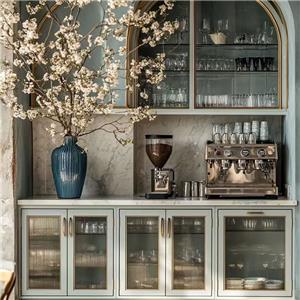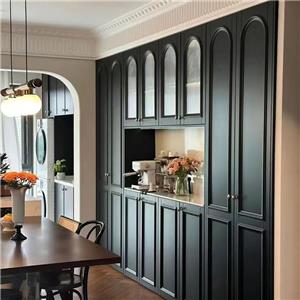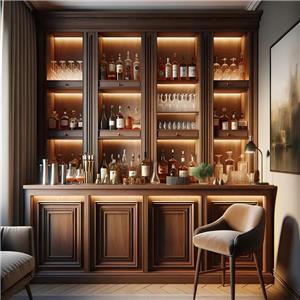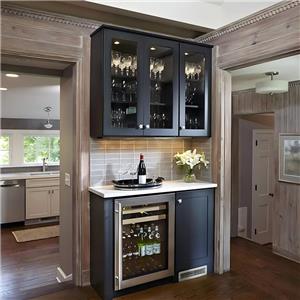What are European kitchen cabinets?
As one of the classic designs in the field of home decoration, European kitchen cabinets are popular for their unique aesthetic style and functionality. Unlike other types of kitchen cabinets, European kitchen cabinets not only reflect the profound heritage of European culture, but also combine practicality and artistry, becoming the first choice for many family kitchen designs.
In this article, we will explore in detail what European kitchen cabinets are, their style characteristics, design elements, and their applications in the home.
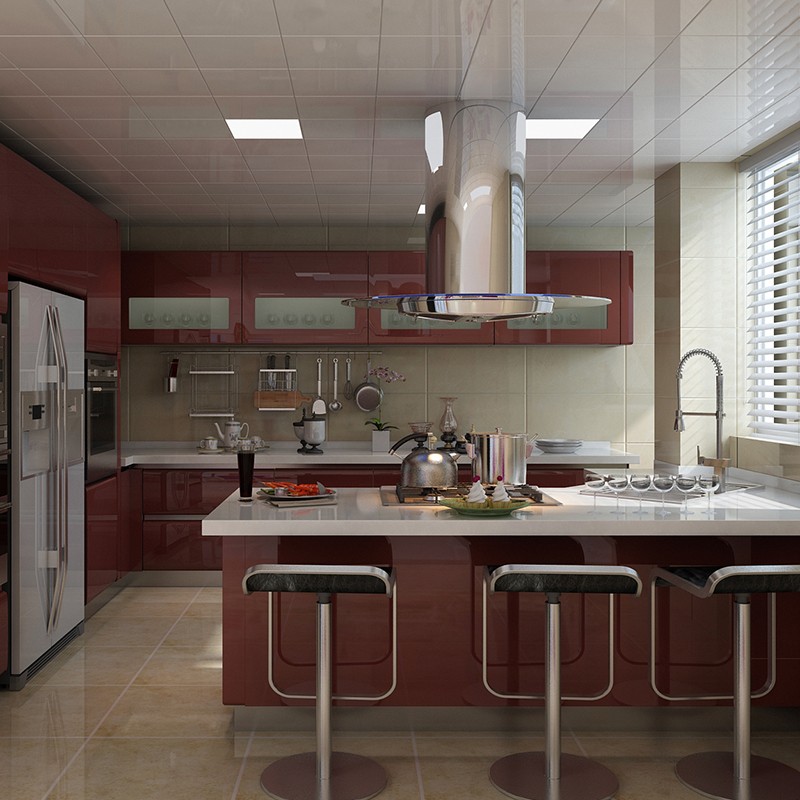
What are European kitchen cabinets?
As the name suggests, European kitchen cabinets are derived from the kitchen design style of European countries, especially the traditional styles of France, Italy and the United Kingdom. European kitchen cabinets usually use high-end materials, fine craftsmanship and historical decorations, focusing on the balance between visual effects and practicality. Its design pays attention to details, combining the magnificence of European classical architecture with the convenience of modern kitchens, creating an elegant and comfortable atmosphere.
The styles of European kitchen cabinets cover a wide range, from classical to modern, from luxury to simplicity, and each style can reflect different cultural backgrounds and design concepts.
What are the main styles of European kitchen cabinets?
Classical European style
Classical European kitchen cabinets are often influenced by the Renaissance and Baroque styles, focusing on symmetry and detailed carvings. This style of kitchen cabinets is usually made of solid wood, with dark colors such as walnut, cherry and oak. The cabinet doors are often decorated with complex carvings and lines, paired with metal handles and vintage hardware to create a solemn and elegant atmosphere.
● Material: Solid wood is the main material for classical European kitchen cabinets, especially hard and durable woods such as oak and walnut. These woods are not only fine in texture, but also have natural textures, which can be polished and painted to show noble texture.
● Color: Classical European style mostly uses dark wood, such as dark brown, dark red, etc. Such color matching appears calm and noble, suitable for large spaces and tall kitchens.
● Design elements: The door panels and edges of classical European kitchen cabinets usually have complex carvings, such as flowers, vines and classic geometric patterns. The choice of hardware is also key, and vintage handles of bronze or brass can enhance this design style.
Pastoral European style
Compared with the classical European style, the pastoral European style kitchen cabinets are softer and emphasize nature and comfort. Influenced by the Provence style in southern France, pastoral European kitchen cabinets often use light colors such as white, beige, light green, etc., with wood texture and simple lines to create a relaxed rural atmosphere.
● Material: Pastoral European kitchen cabinets mostly use light-colored solid wood or composite wood. Common woods include pine, birch, etc. These woods have a soft texture and can highlight the natural feeling of the pastoral style.
● Color: White is the main color of the pastoral European style, which symbolizes purity and simplicity. Light blue, beige and light green are also often used in this style of kitchen cabinets, giving people a warm and peaceful feeling.
● Design elements: The pastoral European style kitchen cabinet design is relatively simple, but some relaxing decorative elements will also be added, such as wooden grille door panels, iron handles, and tiles with floral or vine patterns.
Modern European style
The modern European style maintains the traditional European design and incorporates more modern elements to form a simple, practical and fashionable kitchen cabinet design. Modern European kitchen cabinets usually use simple lines and brighter colors, abandon complex decorations, and pay more attention to the balance between functionality and aesthetics.
● Materials: Modern European kitchen cabinets often use composite materials and natural stones, and even include modern elements such as glass and stainless steel. The choice of wood is more flexible, and light-colored wood, such as maple and birch, can enhance the modern feel of the kitchen.
● Color: Modern European style prefers light tones, such as white, gray, beige, etc., and occasionally uses black or metallic colors as embellishments to form a sharp contrast effect.
● Design elements: Compared with classical and pastoral styles, modern European kitchen cabinets are more concise in design, cabinet doors usually use smooth surfaces, and hardware tends to be simple, pursuing a modern visual experience.
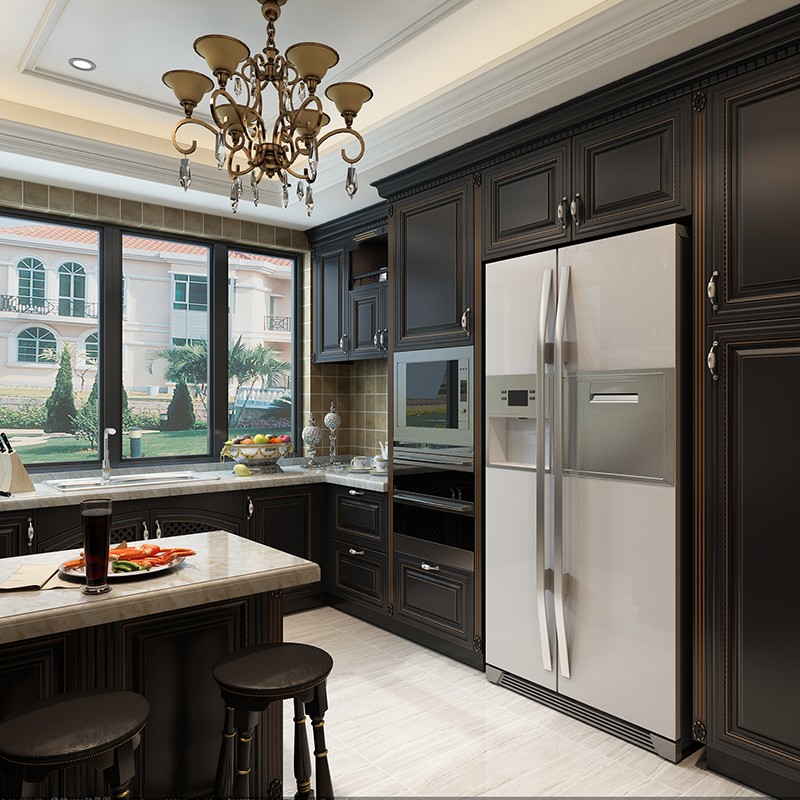
What are the design elements of European kitchen cabinets?
Cabinet door design
Cabinet doors are one of the most iconic elements in European kitchen cabinet design. The doors of classical European kitchen cabinets are usually decorated with complex carvings and lines, with thick door frames and exquisite carvings. The doors of modern European kitchen cabinets are more simple, mostly with smooth designs, emphasizing functionality and visual simplicity.
The door design of European kitchen cabinets not only reflects different aesthetic styles, but is also closely related to the layout and ease of use of the entire kitchen. For example, sliding doors and folding door designs can optimize the space utilization of the kitchen while maintaining the overall aesthetics.
Hardware accessories
Hardware accessories are a key part of improving the texture of European kitchen cabinets. Classical European style often uses hardware made of retro materials such as brass and bronze, and the surface often has carvings or complex decorations. In modern European style, hardware accessories made of materials such as stainless steel and aluminum alloy are more common, with smooth surfaces and simple lines, giving people a sense of modernity and technology.
Countertop materials
The choice of countertop materials for European kitchen cabinets is also very particular. Traditional European kitchen countertops are mostly made of marble, especially natural stones with complex textures, which can enhance the luxury of the kitchen. The modern European style prefers to use materials such as artificial stone and quartz stone, which have the beauty of natural stone, good durability and easy cleaning.
The thickness and edge treatment of the countertop are also the focus of the design. The heavy marble countertop with carved edges can often enhance the overall three-dimensional sense, while the modern style countertop pays more attention to the smoothness and simplicity of lines.
Lighting design
In European kitchens, lighting is not only a functional lighting device, but also has the function of creating an atmosphere. Decorative lamps such as chandeliers and wall lamps are often used in European kitchen designs to highlight the gorgeousness and layering of the kitchen. The softness of light and brightness adjustment can make the entire kitchen look more warm and elegant.
Modern European kitchen cabinets use more embedded lamps, such as LED light strips embedded in the cabinet body, which can provide sufficient lighting without destroying the overall simple design.
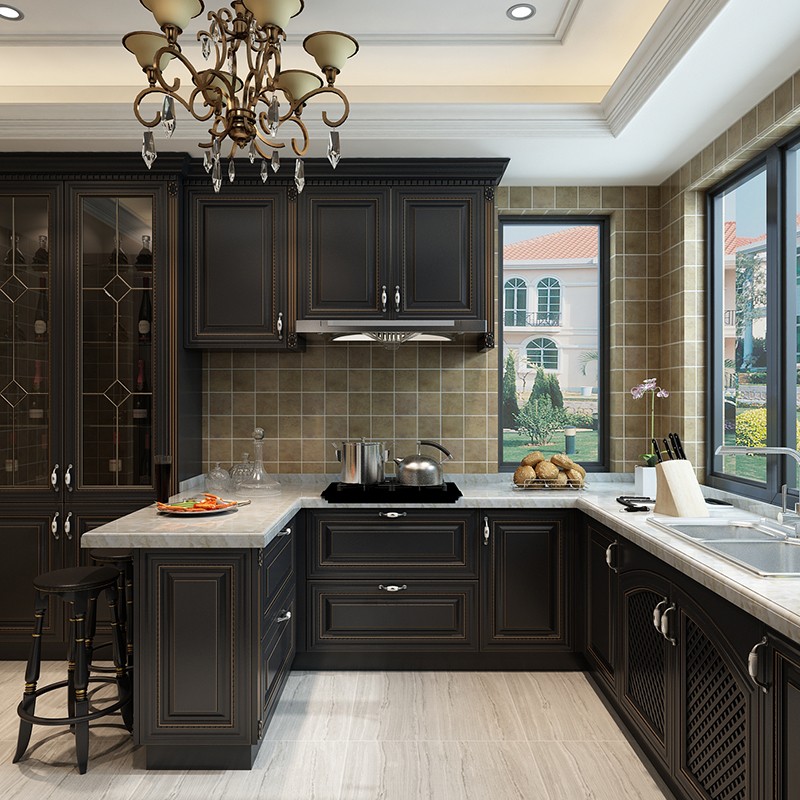
What is the functional design of European kitchen cabinets?
Storage space optimization
European kitchen cabinets not only focus on aesthetics, but functionality is also an important part of their design. Through reasonable layout, European kitchen cabinets can provide sufficient storage space to meet daily cooking needs. For example, the drawer-type design common in modern European kitchen cabinets can easily store tableware, pots and other items, improving the utilization of space.
In addition, the upper and lower cabinets of European kitchen cabinets usually have different designs. The upper cabinet is often used to store infrequently used items, while the lower cabinet is used to store heavier utensils. The drawer design equipped with slide rails makes it easier to take items.
Functional zoning
The functional zoning of European kitchen cabinets is very clear, and is usually reasonably divided according to cooking habits. For example, the distribution design of the sink area, cooking area and meal preparation area is reasonable, which can reduce the confusion during kitchen operations. At the same time, the interior of drawers and cabinets can also be equipped with different compartments and storage devices to classify and store items and increase the convenience of use.
The design of functional zoning is also reflected in space utilization. For example, rotating pull-out baskets are often used at corners, which solves the problem that traditional cabinet corners are difficult to use and improves the overall utilization of the kitchen.
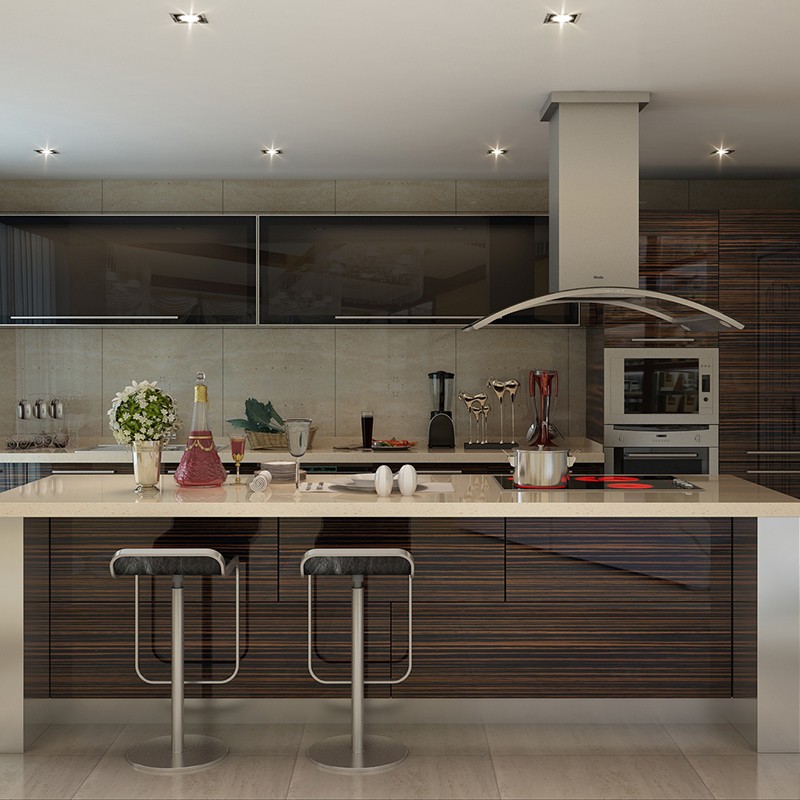
What are the applicable scenarios of European kitchen cabinets?
European kitchen cabinets are suitable for a variety of home styles, especially in villas, large apartments and high-end apartments. Its classic and elegant design not only allows it to blend with traditional home environments, but also adds a touch of nobility to modern spaces.
● Villas and large apartments: In villas or large apartments with larger spaces, European kitchen cabinets can fully demonstrate their noble and luxurious qualities. Its grand design and rich storage functions can meet the various needs of family members and enhance the overall grade of the kitchen.
● High-end apartments: In high-end apartments, modern European kitchen cabinets, with their simple yet elegant design style, can match the modern decoration style of the apartment, creating a comfortable and refined living environment.
● Traditional homes: For traditional-style home environments, classical European kitchen cabinets can coordinate with the overall decoration style, enhancing the overall sense and artistry of the space.

